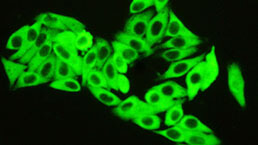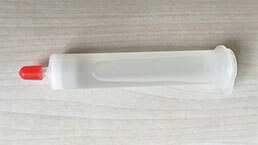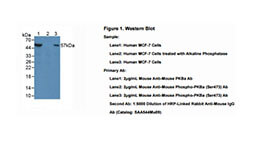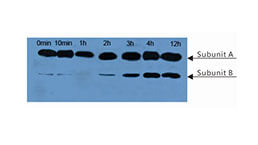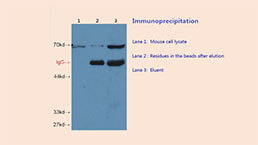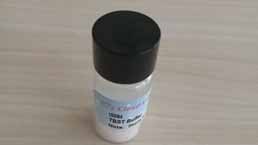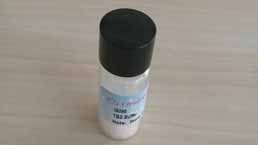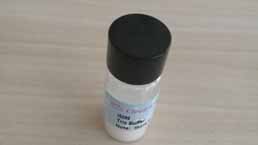Polyclonal Antibody to Lactate Dehydrogenase (LDH) 

Overview
Properties
- Product No.PAB864Mu01
- Organism SpeciesMus musculus (Mouse) Same name, Different species.
- ApplicationsWB; IHC; ICC; IP.
If the antibody is used in flow cytometry, please check FCM antibodies.
Research use only - Downloadn/a
- CategoryEnzyme & KinaseMetabolic pathwayTumor immunityInfection immunityCardiovascular biologyHepatology
- SourcePolyclonal antibody preparation, Host Rabbit
- Ig Type IgG, Potency n/a
- PurificationAntigen-specific affinity chromatography followed by Protein A affinity chromatography
- LabelNone
- Immunogen n/a
- Buffer FormulationPBS, pH7.4, containing 0.02% NaN3, 50% glycerol.
- TraitsLiquid, Concentration 500µg/mL
Sign into your account
Share a new citation as an author
Upload your experimental result
Review

Contact us
Please fill in the blank.
Specifity
The antibody is a rabbit polyclonal antibody raised against LDH. It has been selected for its ability to recognize LDH in immunohistochemical staining and western blotting.
Usage
Western blotting: 0.2-2µg/mL;1:250-2500
Immunohistochemistry: 5-20µg/mL;1:25-100
Immunocytochemistry: 5-20µg/mL;1:25-100
Optimal working dilutions must be determined by end user.
Storage
Store at 4°C for frequent use. Stored at -20°C in a manual defrost freezer for two year without detectable loss of activity. Avoid repeated freeze-thaw cycles.
Stability
The thermal stability is described by the loss rate. The loss rate was determined by accelerated thermal degradation test, that is, incubate the protein at 37°C for 48h, and no obvious degradation and precipitation were observed. The loss rate is less than 5% within the expiration date under appropriate storage condition.
Giveaways
Increment services
Citations
- Hydrogen sulfide antagonizes homocysteine-induced neurotoxicity in PC12 cellsPubMed: 20674619
- Formaldehyde induces neurotoxicity to PC12 cells involving inhibition of paraoxonase-1 expression and activityPubMed: 21261675
- Hydrogen sulfide prevents formaldehyde-induced neurotoxicity to PC12 cells by attenuation of mitochondrial dysfunction and pro-apoptotic potentialScienceDirect: S0197018612001428
- Docosahexaenoic and eicosapentaenoic acid supplementation does not exacerbate oxidative stress or intravascular haemolysis in homozygous sickle cell patients.Pubmed: 24095588
- Nerve growth factor rescues diabetic mice heart after ischemia/reperfusion injury via up-regulation of the TRPV1 receptorPubmed:25650182
- An Additional risk of Lung Cancer from Recurrent Exposure to Ethyl Carbamate (EC) in BALB/C MiceOpen-Access: 1000375
- NLF20: an antimicrobial peptide with therapeutic potential against invasive Pseudomonas aeruginosa infectionPubMed: 26503666
- Dysfunction of mitochondria and deformed gap junctions in the heart of IL-18-deficient micePubmed:27288439
- Proteomic analysis of fine-needle aspiration in differential diagnosis of thyroid nodulesPubmed:27172385
- UpreCavia (Guinea pig )lation of CBS/H2S system contributes to asymmetric dimethylarginine-triggered protection against the neurotoxicity of glutamate to PC12 cells by inhibiting NOS/NO pathwayscience:S0014482716301598
- Transgenic sickle cell trait mice do not exhibit abnormal thermoreCavia (Guinea pig )latory and stress responses to heat shock exposurePubmed:27282581
- Outer Balloon Ligation Increases Success Rate of Ischemia-Reperfusion Injury Model in Mice.pubmed:27907155
- Adiponectin protects the rats liver against chronic intermittent hypoxia induced injury throughAMP-activated protein kinase pathway.pubmed:27678302
- Ameliorating effect of anti-Alzheimer’s drugs on the bidirectional association between type 2 diabetes mellitus and Alzheimer’s diseasepubmed:28534431
- A Novel Potential Strategy for Enhancing Antigen Presentation of Human Hepatocellular Carcinoma Cells Propagated ex-vivo Using a Ribonuclease Enzyme …Scholarena:Source
- Protective effects of N (2)‑L‑alanyl‑L‑glutamine mediated by the JAK2/STAT3 signaling pathway on myocardial ischemia reperfusionPubmed:29393473
- Hydrogen‑rich solution against myocardial injury and aquaporin expression via the PI3K/Akt signaling pathway during cardiopulmonary bypass in ratsPubmed:29956781
- A novel potential effective strategy for enhancing the antitumor immune response in breast cancer patients using a viable cancer cell‑dendritic cell‑based vaccinePubmed:29928442
- Osteopontin protects against pneumococcal infection in a murine model of allergic airway inflammationPubmed: 30362569
- Low plasma haptoglobin is a risk factor for life-threatening childhood severe malarial anemia and not an exclusive consequence of hemolysisPubmed: 30510258
- Differentially expressed lncRNAs, miRNAs and mRNAs with associated ceRNA networks in a mouse model of myocardial ischemia/reperfusion injuryPubmed: 32705277
- Extracellular Vesicles Derived from Human Umbilical Cord Mesenchymal Stromal Cells Protect Cardiac Cells Against Hypoxia/Reoxygenation Injury by Inhibiting …Pubmed: 32864999
- Biological Safety and Biodistribution of Chitosan NanoparticlesPubmed: 32340313
- Prevention of kidney injury after myocardial ischemia reperfusion is achievable with short-term protein restriction
- Milk fat globule EGF factor 8 restores mitochondrial function via integrin©\medicated activation of the FAK©\STAT3 signaling pathway in acute pancreatitis33634976
- Factors Affecting the Incidence, Progression, and Severity of COVID-19 in Type 1 Diabetes Mellitus34840966
- Improvement of autophagic flux mediates the protection of hydrogen sulfide against arecoline-elicited neurotoxicity in PC12 cellsPubmed:35316162
- A Famous Chinese Medicine Formula: Yinhuo Decoction Antagonizes the Damage of Corticosterone to PC12 Cells and Improves Depression by Regulating …Pubmed:35281603
- LncRNA KCNQ1OT1 attenuates myocardial injury induced by hip fracture via regulating of miR-224-3p/GATA4 axisPubmed:35217336






